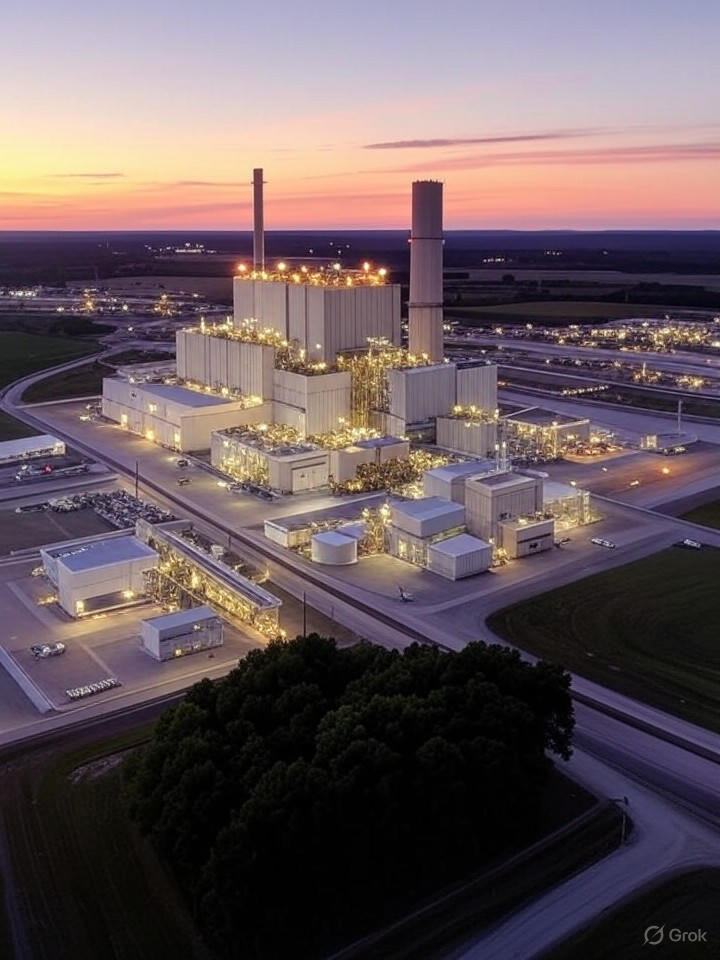In a significant move to meet the escalating energy demands of artificial intelligence, Google has partnered with NextEra Energy Inc. to revive the Duane Arnold Energy Center in Iowa. The nuclear power plant, which halted operations in 2020 due to damage from a derecho storm, is scheduled to resume power generation by early 2029. This initiative aims to provide carbon-free electricity directly to Google’s expanding data centers in the region.
This partnership follows a recent trend where major technology companies are turning to dormant nuclear facilities to support their energy needs. Notably, Microsoft has also initiated plans to restart the Three Mile Island plant in Pennsylvania. As data centers increasingly consume energy comparable to small cities, nuclear power presents a reliable and low-emission alternative to fossil fuels. This aligns with Google’s commitment to achieving net-zero emissions by 2030.
Strategic Shift Towards Nuclear Energy
The revival of the Duane Arnold facility is not merely a response to immediate energy requirements; it signifies a broader strategic shift within the tech industry towards reinvigorating America’s aging nuclear infrastructure. According to a report from The Verge, Google’s collaboration with NextEra could serve as a model for similar projects, potentially unlocking vast amounts of clean energy that have remained untapped.
Originally commissioned in 1974, the Duane Arnold plant was decommissioned in 2020 due to economic challenges and storm damage. Recent advancements in reactor maintenance and regulatory processes now make reactivation both feasible and appealing. Experts from the Nuclear Energy Institute suggest that reviving existing plants could prolong their operational life, circumventing the lengthy timelines associated with constructing new facilities.
Beyond Iowa, this trend illustrates how major tech companies are reshaping the energy landscape. Google has already signed agreements for small modular reactors with firms like Kairos Power, as highlighted by The Guardian. The scale and speed of the Iowa project are particularly notable, with NextEra planning to invest hundreds of millions of dollars in upgrades while navigating federal approvals from the Nuclear Regulatory Commission.
Challenges and Economic Implications
Despite the ambitious plans, restarting a nuclear plant involves considerable challenges. Safety concerns, the impact on local communities, and the financial burden of retrofitting aging equipment present significant obstacles. Insights from CNBC emphasize that collaboration with state regulators will be crucial to maintaining grid stability, especially as demand driven by AI technologies grows.
Economically, the revival of the Duane Arnold facility is poised to create hundreds of jobs in Palo, Iowa, revitalizing a community that suffered following the plant’s closure. For Google, securing a dependable energy source is essential amid the unpredictability of renewable energy outputs. On a national level, this initiative could influence U.S. energy policy, promoting incentives for nuclear restarts. As reported by ABC News, similar actions by Microsoft highlight a trend of tech companies emerging as significant players in energy production, potentially accelerating the shift towards sustainable power.
Looking to the future, the success of the Duane Arnold project could lead to a resurgence of nuclear power across the United States, where more than a dozen plants have been closed in the past decade. Google’s ongoing engagement in nuclear energy procurement, as noted by BBC, positions the company as a leader in merging technology and energy sectors. Competitors such as Meta Platforms Inc. are also exploring nuclear options, indicating a competitive race among tech companies to secure clean, reliable energy sources.
Ultimately, the partnership between Google and NextEra exemplifies the intersection of technological ambition and environmental responsibility. By revitalizing existing infrastructure, this collaboration addresses the dual challenges of AI’s energy demands and climate goals, potentially setting a precedent for future tech-energy partnerships globally.







